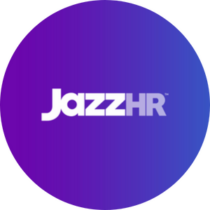
Recruitment Marketing: Building Automated Workflows
Recruitment marketing has come a long way since newspaper “Help Wanted” ads were the height of candidate outreach. Today, active job seekers have dozens of career boards to peruse, not to mention thousands of career pages on company websites. And those massive campaigns don’t even reach the millions of passive job seekers willing to make a move for the right opportunity. Digital recruitment marketing strategies take a multichannel approach to find, attract, engage and nurture candidates. Best-in-class applicant tracking systems (ATS) expand the reach of these efforts by reducing the amount of time and resources it takes to build and deploy a campaign. Automation lies at the center of the benefits an ATS brings to an organization. By reducing administrative burdens, an ATS frees recruiters to focus on the human element of HR.

How recruitment marketing supports candidate engagement
In sales, it takes between six and eight touchpoints to generate a viable lead, and the same can be said for recruitment. If job seekers have never heard of a brand, they probably are not going to jump at an open position with the company. They need to learn more about the organization’s mission, culture and track record. In fact, company culture is the No. 1 reason candidates choose one position over another. Recruitment marketing campaigns generate candidate engagement by addressing these informational needs. Not every marketing effort needs to be a call to action imploring readers to apply for a job. Instead, marketing collateral should display the company in such a way that applying for a job becomes irresistible.
Why automation improves conversion rates
By automating marketing tasks, recruiters free up time to focus on building campaigns that engage readers. Every minute saved by reducing the need to post individual ads to various platforms is a minute gained for creative processes. In almost every vertical, marketing automation has already proven to be an effective means for improving conversion rates. In fact, research shows that marketing automation drives a 14.5% increase in sales productivity. The comparison between sales and recruitment may not be exactly one to one, but these concepts are similar enough to illustrate that recruitment marketing can greatly benefit from automation. The key is to take full advantage of the time saved.

How to build automated recruitment marketing workflows
It’s no longer enough to post an opening on a job board and wait for applications to pile into your inbox. Automated recruitment marketing ensures that each job post you create gets supported by branded content. To build workflows in your ATS, determine what type of supporting content you’ll need. Examples include:
- Email newsletters
- Social media posts
- Career pages
Within your ATS, you can create templates for your marketing collateral. For example, you could develop an email series that includes relevant information about your company culture. Then, when you post new job ads online, you can trigger the corresponding email campaign.
Takeaways
Recruitment marketing supported by ATS automation has the power to maximize an organization’s talent pipeline. Automated workflows help recruiters to:
- Increase the number of touchpoints with prospective candidates.
- Engage and nurture candidates in the pipeline.
- Reduce administrative burdens.
- Align job ads with company branding.
to learn more about how automation and artificial intelligence can improve your hiring efforts.






Leave a Reply
You must be logged in to post a comment.